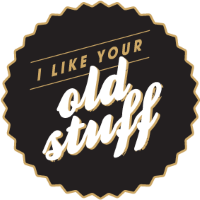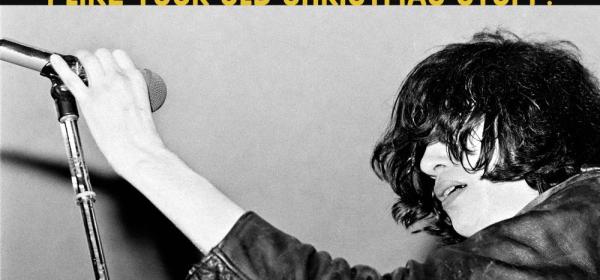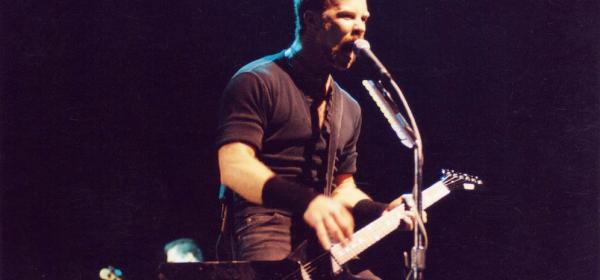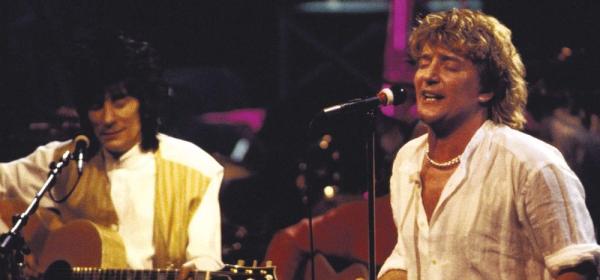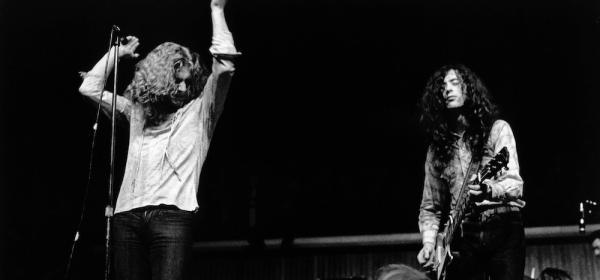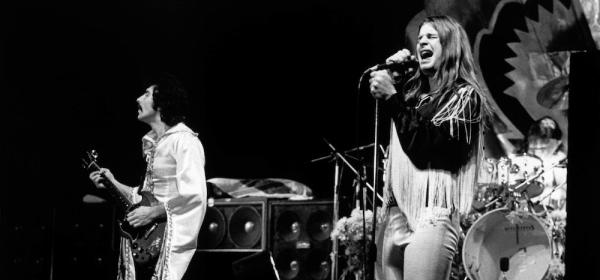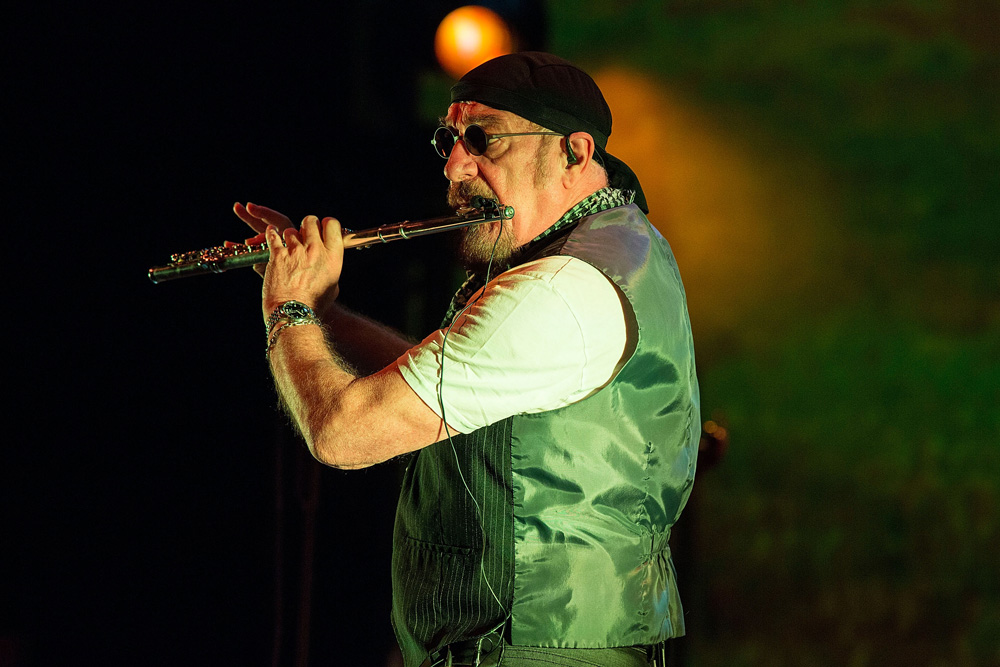
With a multitude of Jethro Tull 50th Anniversary releases out this year, we thought it might be a nice time to look at unusual instruments that have been used in rock. Jethro Tull of course, are well known for Ian Anderson’s use of the flute. Tull are indeed one of the only rock artists to use a weird instrument on a regular basis; for most artists, it's usually a case of bringing something in to give a track a certain feel or texture. The only other artists we can think of that might use exceptional instruments on a regular basis are those more fully steeped in a folk or ethnic tradition, or coming from a classical, jazz or avant-garde background. Sadly no recordings exist of the Psychedelic Stooges – Iggy & pals before they shortened their name to just the Stooges – with Iggy ‘playing’ a vacuum cleaner and a blender full of water, but there’s plenty of fun to be had here.
Given the release we’re celebrating here, let’s start with a bit of Tull.
1. The Flute - Jethro Tull
If you’re like me, when you think of Jethro Tull, you think of Ian Anderson strutting around in his codpiece, holding his flute to his mouth. Anderson is definitely one of those guys steeped in the folk tradition, although Tull became popular with progressive rock fans and even hard rock fans as they went along.
2. The Bagpipes - AC/DC
In probably the most famous single use of a non-rock instrument in a rock song, Bon Scott celebrated his Scottish heritage and found an excuse to wear a kilt when he suggested the bagpipe part in “It’s Long Way To The Top”. The sheer larrikin aspect of the whole thing makes it seem very Australian actually, just like Bon…
3. The Didgeridoo - Kate Bush, Joe Geia
And speaking of things Australian… Not Kate of course, but she obviously knew of Australian Aboriginal tradition of The Dreamtime (and some history), and thus augmented the Aboriginal feel of her song “The Dreaming” with a didge. Of course, the Didgeridoo has been used on some Australian rock records, including Goanna’s “Solid Rock”, which featured the playing of Joe Geia of influential Indigenous rockers No Fixed Address. Joe recorded some wonderful solo material too, including the song "Yil Lull", which has been recorded by many others including Paul Kelly and Jimmy Barnes. Let’s hear Joe’s original…
4. The Bouzouki - Keith Urban
Sticking with Australia, Keith Urban is one of Australia’s biggest musical exports. So did he also chuck a didgeridoo onto some of his records? No, of course not – he used a bouzouki, the famous Greek instrument. It’s not that surprising really, Keith like many of his Nashville heroes and friends, loves all stringed instruments, and the bouzouki is really not that dissimilar to the mandolin, which of course is often used on country records.
5. The Ocarina - The Troggs
Why one of the most primitive and charmingly banal rock records ever somehow manages to incorporate an Ocarina solo is one of rock’s great mysteries. The Ocarina, an ancient wind instrument that apparently dates back 12,000 years, was probably not often in common on the building sites that former Hampshire brickie Reg Presley worked at until he heard his voice on the radio, but in this clip he turns his back during the solo and pretends he’s playing it. You had us fooled Reg!
6. The Theremin – The Beach Boys, Jon Spencer Blues Explosion
The Theremin – that odd early electrical instrument that is played not by touch, but by moving one’s hands in close proximity to the instrument’s two antennas - has been used more in spooky soundtracks than in rock, but Brian Wilson introduced a modern variation on it – the Electro-Theremin - to the Beach Boys’ “Good Vibrations”, giving the chorus a transcendental vibe. This version of the instrument was played more like a traditional instrument – you can see Mike Love playing it in the clip here. ‘90s alternative heroes the Jon Spencer Blues Explosion used a real Theremin, and made fabulous use of it on stage; as the music descended into chaos around him, Spencer would wave his hands around his Theremin like a magician conjuring up a storm of sound. Check it out on this vintage Recovery performance, and then watch Jon explain and demonstrate the instrument.
7. The Hurdy Gurdy - Metallica
An instrument from the Dark Ages is probably apt for heavy metal – we’re surprised it hasn’t been used more. Metallica have used it just the once. It’s a fascinating instrument the Hurdy Gurdy - a weird combination of violin and keyboard in a box that you have to crank to make it play. It was pre-electrical of course, but like the Theramin, there’s something otherworldly about it, which might explain why it came into favour in the late ‘60s – around the nexus of psychedelia and the folk revival – at the same time people became obsessed with Tolkien and the like. Here’s the studio version of Metallica’s “Low Man’s Lyric” together with a live unplugged version in which you can see the instrument as it’s played. (If you like the Hurdy Gurdy you check out Melbourne band the Gruntled who make a lovely “Avant-Medieval’ psychedelic racket using the Hurdy Gurdy and other ye olde instruments while prancing around wearing animal heads like in some scene out of The Wickerman).
8. The Harpsichord – The Partridge Family
From the Dark Ages to the Renaissance… Okay, more teenybopper bubblegum than rock, but the Partridge Family had some fine early 70s pop records released under their name (actually recorded by the fabled Los Angeles Wrecking Crew with vocals by David Cassidy – we’d hazard a guess that Danny Partridge and his bass weren’t required at the sessions!). The fact that there records were aimed at pre-pubescents makes it all the stranger that many of them prominently featured the sounds of a Renaissance-era precursor to the piano (possibly played on an electronic keyboard?). Harpichord sounds were actually quite popular once baroque influences entered the pop field in the ‘60s thanks to the likes of the Yardbirds and the Left Banke, and ILYOS would like to see a Harpsichord revival happen soon…
9. Spoons - Soundgarden
Well if you’re gonna write a song called “Spoonman”, I guess you’re gonna go to the cutlery draw… The Spoons have been used for centuries in British and other European folk traditions (and of course subsequently in American and Australian folk traditions), and are one of those musical instruments you have when you don’t have a musical instrument, thus making it popular with street musicians. Soundgarden’s track features - and was inspired by - Californian street musician Artis the Spoonman. They got a Grammy for this track; hopefully Artis got one too.
10. The Jug – The Thirteenth Floor Elevators
Staying in the kitchen for a bit, legendary Texan psychedelic pioneers the 13th Floor Elevators gave their music a distinctive trippy sound by incorporating an amplified jug. We kid you not. Jug player Tommy Hall would basically spend the song - all song, every song - making a weird bubbling noise into the jug, which would bounce around inside and come back out into the mic. The jug – blown into to make a tuba-like sound – was common in early American folk and blues – and ‘jug bands’ were common during the ‘60s folk revival – but Tommy, like all the Elevators, did it his way.
11. The Autoharp – The Lovin’ Spoonful
One band that developed out of the aforementioned early-‘60s jug band scene was New York’s Lovin’ Spoonful who went onto become one of America’s biggest bands of the mid-‘60s and counted the Beatles and other luminaries amongst their fans. Whilst the Spoonful were a much more modern thing than the jug bands they came from, they still played a bit of the old-time folk blues, and singer John Sebastian was known for strumming an autoharp, another pre-rock instrument whose most famous practitioner may well have Johnny Cash’s ma-in-law, Mother Maybelle Carter. And yep, he plays it in their wonderful hit “Do You Believe in Magic?”.
12. The Kazoo - Jimi Hendrix
Another artist steeped in early blues lore, yet one who took it somewhere into outer space, Jimi famously played the riff on “Crosstown Traffic” not only on his guitar but on a comb and tissue paper – in other words, a primitive kazoo. Kazoos were often used in the folk/acoustic blues and jazz recordings in the ‘20s.
13. The Glockenspiel - Ramones, Bruce Springsteen & the E-Street Band
When you think of the Glockenspiel, you probably think of orchestra practice and marching bands. But you should think of leather jackets and torn jeans, because not only did the Ramones use one towards the end of the great ‘ballad’ “I Wanna Be your Boyfriend” on their first album, but it’s part of the early Bruce Springsteen/E Street Band sound, thanks to the late and great E-Streeter Danny Federici, who played a keyboard Glockenspiel. And yes that’s it doubling up on the famous guitar line in “Born to Run”.
14. The Xylophone - The Violent Femmes
The Xylophone, like the Glockenspiel, is considered a percussion instrument, despite the fact you can play a tune on it. Which makes one wonder - if hitting it makes an instrument a percussion instrument, surely every instrument used in rock is a percussion instrument? Anyway, a Xylophone was used to play a bloody good riff in the Violent Femmes’ biggest track. In fact, such is the presence of the instrument here, it’s not hard to imagine the whole track as just Xylophone and voice…
15. The Simeon – The Silver Apples
And finally an instrument you’ve probably never heard of. And that’s because; before the band who used it used it, it didn’t exist. Late ‘60s New York outfit the Silver Apples came out of the psychedelic avant-garde and played wonderfully pulsating and organic music utilising only drums and a weird instrument comprising electronic oscillators. The bank of electronics and keyboard was devised by the band’s singer who was simply called Simeon; the instrument was of course also simply called ‘The Simeon’. The Silver Apples have had an ongoing influence on electronic music in rock. The song “Oscillations” tells you where it’s at.
- Dave Laing
